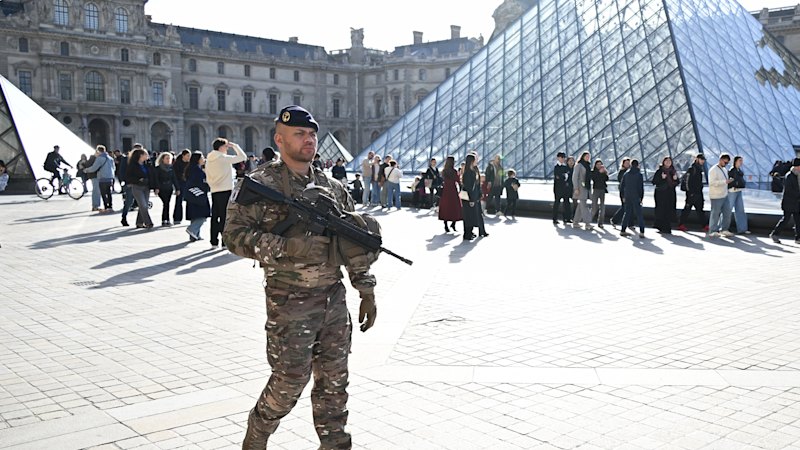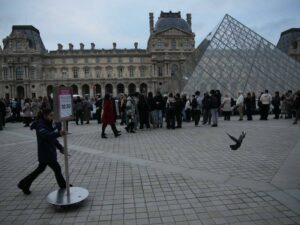
Five additional suspects were arrested in connection with the audacious jewel heist at the Louvre Museum, where thieves made off with a trove valued at approximately $157 million. The Paris prosecutor confirmed on March 15, 2024, that one suspect was linked to the crime through DNA evidence, increasing the total number of arrests to seven.
Authorities have focused their investigation on a group dubbed the “commando” team by French media. Prosecutor Laure Beccuau reported that three of the four key alleged members of the team are now in custody. The suspects were apprehended during late-night operations in Paris and the neighboring Seine-Saint-Denis area. Beccuau stated that one detainee is believed to have participated in the brazen daylight robbery that occurred in the Apollo Gallery on October 19, 2023.
Despite these developments, the stolen jewels remain elusive. The cache included a diamond-and-emerald necklace gifted by Napoleon to Empress Marie-Louise, along with other historical pieces tied to 19th-century monarchs. Only one item, a damaged crown belonging to Empress Eugénie, has been recovered. Beccuau noted that these jewels are now “unsellable” and urged that there is still time for their return.
The Heist’s Execution and Investigation Details
The meticulously planned heist unfolded in just four minutes. In the days leading up to the crime, the thieves stole a truck-mounted lift after responding to a fake moving advertisement on the French classifieds site Leboncoin. On the morning of the burglary, this vehicle was positioned beneath the Louvre’s riverside façade. At 09:30, the lift elevated to the Apollo Gallery window; by 09:34, the glass had been smashed, and at 09:38, the crew had escaped.
Security footage captured the suspects as they forced a window and used power tools to cut through display cases. They fled on scooters towards eastern Paris. Investigators have found no evidence of insider assistance, although they are exploring the possibility of a wider network involved in the heist.
Beccuau described the police response as an “exceptional mobilisation,” involving around 100 investigators working continuously to analyze approximately 150 forensic samples and seal 189 items as evidence. Despite these efforts, the stolen jewels have not yet been located.
Concerns Over Louvre Security
The heist has sparked significant concern regarding security at the Louvre, the world’s most-visited museum. Patrice Faure, the Paris police chief, acknowledged critical gaps in the museum’s defenses. The first alert to police did not come from the museum’s security systems but rather from a passerby who reported suspicious activity to the emergency line.
The Louvre’s security cameras are reportedly outdated, with a major upgrade project that is not expected to be completed until 2029-2030. Faure admitted that the museum’s camera authorization had lapsed in July, contributing to the vulnerabilities that allowed the theft to occur.
Former bank robber David Desclos characterized the heist as textbook, suggesting that he had previously warned the Louvre of significant security weaknesses. While the museum has yet to respond to these claims, the incident has ignited a national debate on the protection of cultural treasures in France.
Two earlier suspects, aged 34 and 39 from Aubervilliers, were charged with theft by an organized gang. They reportedly gave minimal statements during questioning, with one suspect attempting to leave the country with a one-way ticket to Algeria. DNA evidence linked him to a scooter used in the getaway.
As investigations continue, the focus remains on recovering the stolen jewels and addressing the critical security flaws highlighted by this daring crime.






